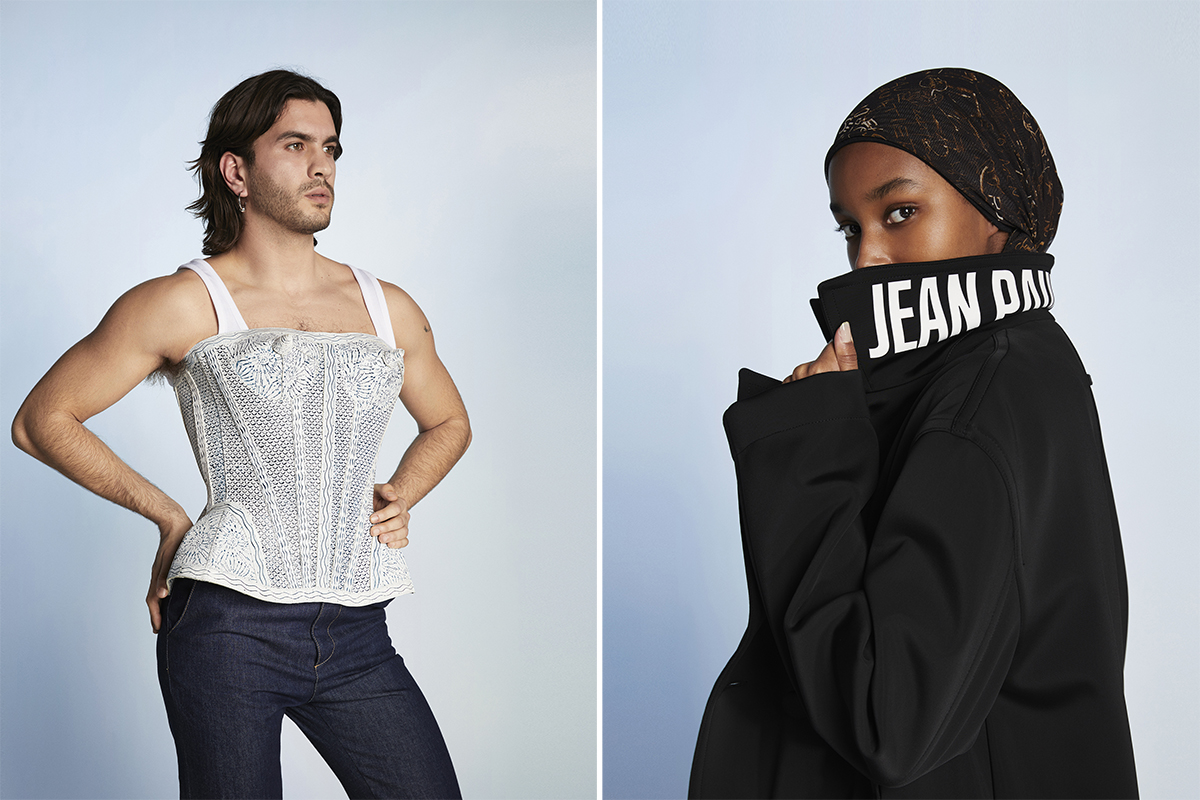Jean Paul Gaultier returns to ready-to-wear with a slew of guest designers.
Ready-to-wear fashion hasn’t been a part of the Jean Paul Gaultier brand since 2015. The French designer, who made his name with his signature marinière styles and corsets for the likes of Madonna, quit the RTW calendar to focus on haute couture and perfume collections. Since then, he’s stepped back from designing all aspects of his brand, announcing his retirement in January 2020 and then announcing the first creative director of the new haute couture collection, Chitose Abe from the Japanese brand Sacai, whose collaboration was unfortunately canceled due to the coronavirus crisis.
Jean Paul Gaultier has now announced his return to the world of ready-to-wear with a summer drop, available now at Ssense. The nautical-themed pieces were created in collaboration with five up-and-coming designers: Marvin M’Tuomo, Alan Crocetti, Palomo Spain, Ottolinger, and Nix Lecourt Mansion.
The guest designer strategy for the brand’s return to ready-to-wear embodies a trend that has always been a part of fashion, but has seen an especially strong resurgence over the last couple of years.
Houses looking to guest designers to curate pieces show how the fashion industry has, in a way, become more accessible to up-and-comers. In an increasingly inclusive field, Gaultier credits the new summer collection as an “ode to collective action and tribute to the diverse communities that have inspired the House since its creation,” as said in the brand’s press release. By incorporating the work of modern fashion muses, legacy brands are able to reinvent the wheel by adopting current trends, yet stay true to their founding principles.

Brands that haven’t been able to keep up with the contemporary clothing market stand to benefit the most from working with today’s brands. Take Juicy Couture: the famous early 2000s clothing empire crumbled around the 2010s, as founders Pamela Skaist and Gela Nash departed from the company in 2010. By 2013, sales fell 10.7 percent; the same year, the company was sold.
But more recently, Vetements, the luxury streetwear brand launched by Demna Gvasalia in 2014, tapped Juicy Couture for its Spring/Summer 2017 show to create streetwear-inspired looks with a touch of the label’s Y2K fashion with the signature “Juicy” written across pants.
For many brands, however, collaboration doesn’t need to mean an attempt to cling to relevance. Oftentimes, it’s an opportunity to showcase designers’ creativity, while reminding fashion fanatics why they became so prolific to begin with. Moncler has had an array of collaborations with other brands like Valentino and Off-White and in 2018, the house launched the Moncler Genius project, a collective made up of designers including Craig Green and Noir Kei Ninomiya. These extensive collaborations allow the Italian brand to take its signature puffer jacket and reimagine it through fresh eyes.
More affordable labels can also benefit by collaborating with high-end houses, which in turn can reach a wider audience. When Swedish clothing company H&M joined forces with designer Karl Lagerfeld in 2004, the former saw a 24 percent increase in sales. H&M has since made collections with Versace, Maison Margiela, and most recently, Simone Rocha.
The H&M x Karl Lagerfeld collaboration was the first of many–not just for H&M, but for other brands that would follow suit in making collaborative capsule collections. It has set the precedent for the designer collaborations that happen today, merging high-fashion pieces with greater availability.
Fashion brands are always looking for ways to be creative and relevant to the world of fashion. The success of Jean Paul Gaultier’s return to ready-to-wear with five guest designers demonstrates how effective these collaborations can be.
Image credit: Nicolas Coulomb




